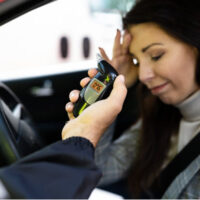How Does A Breathalyzer Measure Blood Alcohol?

Most people are familiar with breathalyzer tests, either because they have been pulled over for suspected drunk driving or have seen the devices used in movies or read about them in books or articles. A breathalyzer is a device used by law enforcement, it is designed specifically to measure a person’s Blood Alcohol Concentration (BAC).
Understanding how a breathalyzer works and what BAC means is incredibly important if you or someone you care about is in the process of facing drunk driving charges. To learn more about the science behind breathalyzers and how BAC levels are used by prosecution teams to build DWI cases, connect with a Houston DWI lawyer. While a breathalyzer can provide evidence, there are also some situations involving false-positive results. Discuss your situation with an attorney.
BAC, Alcohol’s Effect, and Breathalyzer Measurements
When a person consumes alcohol, the ethanol is absorbed into the individual’s bloodstream. This happens through the person’s stomach and small intestine. Once it is in the bloodstream it travels to other parts of the body, including the brain, where it can impair judgment and coordination, which is why drunk driving is against the law for the safety of all using Texas roadways.
A measure of the amount of alcohol with a person’s bloodstream, BAC is typically expressed as a percentage. For example, 0.08% means that there are 0.08 grams of alcohol within a person’s 100 milliliters of blood and the individual is too intoxicated to drive.
Breathalyzers measure BAC by analyzing the alcohol content in a person’s breath. This is a tool commonly used by TX police and it works in the following ways.
- Blowing into the device. Your breath provides a sample for the breathalyzer to collect.
- Infrared absorption takes place. Most modern breathalyzers use a process of passing an infrared light through the breath sample, then the alcohol molecules that are present absorb infrared light at specific wavelengths and the breathalyzer measures the amount of infrared light absorbed by the alcohol molecules.
- Data calculation. Finally, the breathalyzer calculates the data to give an estimate of the alcohol concentration within an individual’s bloodstream. That data is then converted into a BAC reading.
While breathalyzers are generally accurate, there are situations that can impact their reliability, such as a breathalyzer not being calibrated correctly or if the person taking the test was experiencing certain medical conditions, such as acid reflux or diabetes, which can affect results.
Challenging Breathalyzer Results
If you believe that inaccurate or improperly administered breathalyzer results led to your arrest, consult with an experienced Houston DWI lawyer. A skilled attorney will walk you through potential defenses, such as challenging breathalyzer readings or questioning the procedures followed during your arrest.
Are you interested in discussing factors that can impact the accuracy of breathalyzer readings? If you or someone close to you is facing drunk driving charges in the state of Texas, connect with Houston legal counsel to explore your defense options and ensure your rights are protected. Speak to the legal team at Ayson Law Firm. Contact us today for a free consultation.
